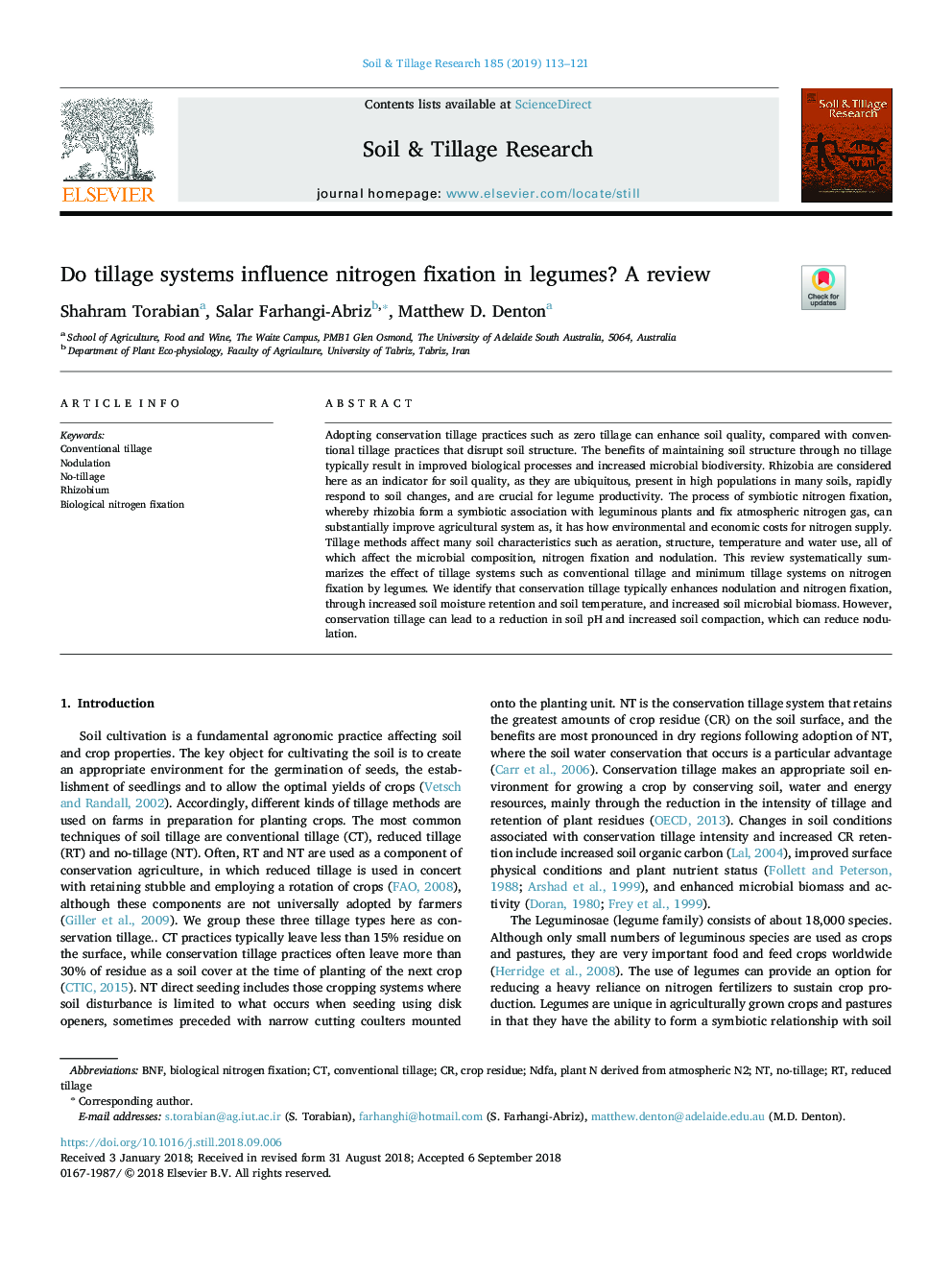| Article ID | Journal | Published Year | Pages | File Type |
|---|---|---|---|---|
| 10139135 | Soil and Tillage Research | 2019 | 9 Pages |
Abstract
Adopting conservation tillage practices such as zero tillage can enhance soil quality, compared with conventional tillage practices that disrupt soil structure. The benefits of maintaining soil structure through no tillage typically result in improved biological processes and increased microbial biodiversity. Rhizobia are considered here as an indicator for soil quality, as they are ubiquitous, present in high populations in many soils, rapidly respond to soil changes, and are crucial for legume productivity. The process of symbiotic nitrogen fixation, whereby rhizobia form a symbiotic association with leguminous plants and fix atmospheric nitrogen gas, can substantially improve agricultural system as, it has how environmental and economic costs for nitrogen supply. Tillage methods affect many soil characteristics such as aeration, structure, temperature and water use, all of which affect the microbial composition, nitrogen fixation and nodulation. This review systematically summarizes the effect of tillage systems such as conventional tillage and minimum tillage systems on nitrogen fixation by legumes. We identify that conservation tillage typically enhances nodulation and nitrogen fixation, through increased soil moisture retention and soil temperature, and increased soil microbial biomass. However, conservation tillage can lead to a reduction in soil pH and increased soil compaction, which can reduce nodulation.
Related Topics
Physical Sciences and Engineering
Energy
Renewable Energy, Sustainability and the Environment
Authors
Shahram Torabian, Salar Farhangi-Abriz, Matthew D. Denton,
